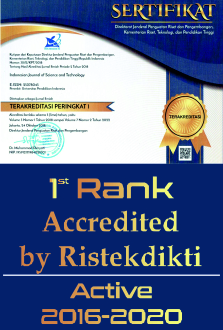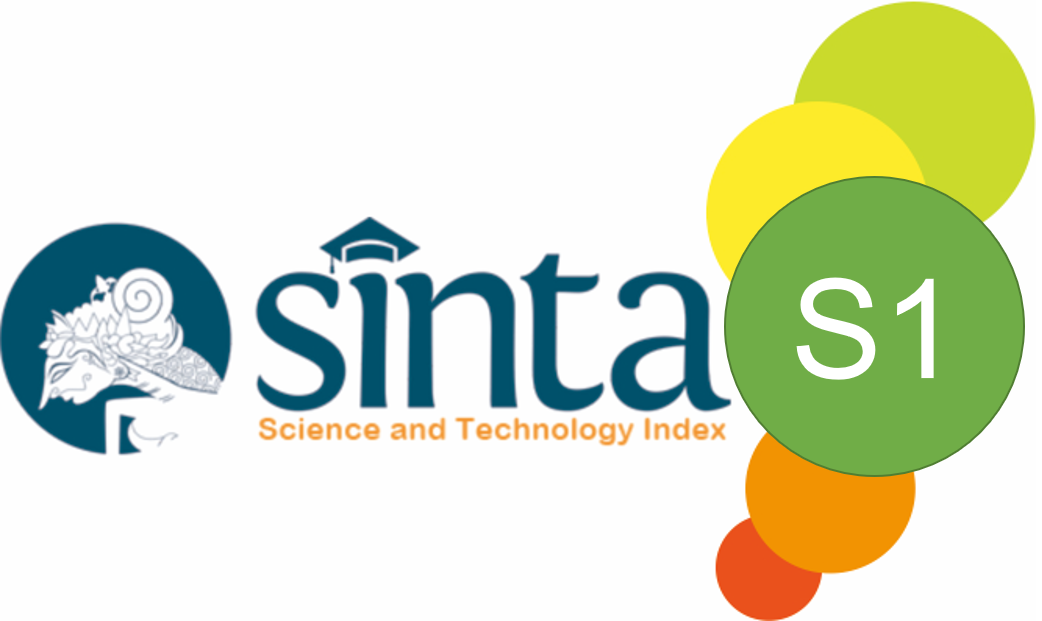Bacterial Cell Inactivation Using a Single-Frequency Batch-Type Ultrasound Device
Abstract
Ultrasound technology employs cavitation to generate high-pressure soundwaves to disrupt bacterial cells. This study reveals the effectiveness of a single frequency ultrasound device for bacterial cell inactivation. A low-cost ultrasound device having a single frequency, i.e. 22 kHz for lab-scale application, was developed first, and the prototype was mechanically designed and analyzed using the finite-element method to assure the targeted natural frequency could be achieved. The prototype was then tested inactivating bacterial cells, Escherichia coli (E. coli) and Bacillus subtilis (B. subtilis), in a simple medium and a food system, and the results were then compared to a commercial system. A treatment time of up to 15 minutes was able to reduce E. coli and B. subtilis cells by 3.3 log and 2.8 log, respectively, and these results were similar to those of the commercial system. The effectiveness of bacterial cell inactivation using the developed single-frequency ultrasound device is then discussed. The findings are useful for designing low-cost ultrasound devices for application in the food industry.
Keywords
Full Text:
PDFReferences
Abdurrahman, Umam, R., Irzaman, Palupi, E. K., Saregar, A., Syazali, M., Adi, L. C. (2019). Optimization and interpretation of heat distribution in sterilization room using convection pipe. Indonesian Journal of Science and Technology, 4(2), 204–219.
Ashokkumar, M. (2011). The characterization of acoustic cavitation bubbles - An overview. Ultrasonics Sonochemistry, 18(4), 864–872.
Bermúdez-Aguirre, D., Corradini, M. G., Mawson, R., and Barbosa-Cánovas, G. V. (2009). Modeling the inactivation of Listeria innocua in raw whole milk treated under thermo-sonication. Innovative Food Science and Emerging Technologies, 10(2), 172–178.
Bilad, M. R. (2017). Membrane bioreactor for domestic wastewater treatment: Principles, challanges and future research directions. Indonesian Journal of Science and Technology, 2(1), 97–123.
Borthwick, K. A. J., Coakley, W. T., McDonnell, M. B., Nowotny, H., Benes, E., and Gröschl, M. (2005). Development of a novel compact sonicator for cell disruption. Journal of Microbiological Methods, 60(2), 207–216.
Brogden, K. A. (2005). Antimicrobial peptides: pore formers or metabolic inhibitors in bacteria?. Nature Reviews Microbiology, 3(3), 238–250.
Brotchie, A., Grieser, F., and Ashokkumar, M. (2009). Effect of power and frequency on bubble-size distributions in acoustic cavitation. Physical Review Letters, 102(8), 1–4.
Butz, P., and Tauscher, B. (2002). Emerging technologies: Chemical aspects. Food Research International, 35(2–3), 279–284.
Chemat, F., Zill-e-Huma, and Khan, M. K. (2011). Applications of ultrasound in food technology: Processing, preservation and extraction. Ultrasonics Sonochemistry, 18(4), 813–835.
Eslaminejad, A., Ziejewski, M., and Karami, G. (2019). An experimental–numerical modal analysis for the study of shell-fluid interactions in a clamped hemispherical shell. Applied Acoustics, 152, 110–117.
Fitriyanti, M., and Narsimhan, G. (2018). Synergistic effect of low power ultrasonication on antimicrobial activity of cecropin P1 against E. coli in food systems. Lebensmittel-Wissenschaft and Technologie, 96, 175–181.
Fülscher, M. P., and Roos, B. O. (1994). The excited states of pyrazine: A basis set study. Theoretica Chimica Acta, 87(4–5), 403–413.
Gao, Shengpu, Hemar, Y., Ashokkumar, M., Paturel, S., and Lewis, G. D. (2014). Inactivation of bacteria and yeast using high-frequency ultrasound treatment. Water Research, 60, 93–104.
Gao, Shengpu, Lewis, G. D., Ashokkumar, M., and Hemar, Y. (2014a). Inactivation of microorganisms by low-frequency high-power ultrasound: 1. Effect of growth phase and capsule properties of the bacteria. Ultrasonics Sonochemistry, 21(1), 446–453.
Gao, Shengpu, Lewis, G. D., Ashokkumar, M., and Hemar, Y. (2014b). Inactivation of microorganisms by low-frequency high-power ultrasound: 2. A simple model for the inactivation mechanism. Ultrasonics Sonochemistry, 21(1), 454–460.
Gao, Siyue, Pearson, B., and He, L. (2018). Mapping bacteria on filter membranes, an innovative SERS approach. Journal of Microbiological Methods, 147(March), 69–75.
González-González, E., Mendoza-Ramos, J. L., Pedroza, S. C., Cuellar-Monterrubio, A. A., Márquez-Ipiña, A. R., Lira-Serhan, D., Alvarez, M. M. (2019). Validation of use of the miniPCR thermocycler for Ebola and Zika virus detection. PLoS ONE, 14(5), 13–16.
Joyce, E., Al-Hashimi, A., and Mason, T. J. (2011). Assessing the effect of different ultrasonic frequencies on bacterial viability using flow cytometry. Journal of Applied Microbiology, 110(4), 862–870.
Joyce, E., Mason, T. J., Phull, S. S., and Lorimer, J. P. (2003). The development and evaluation of electrolysis in conjunction with power ultrasound for the disinfection of bacterial suspensions. Ultrasonics Sonochemistry, 10(4–5), 231–234.
Leonelli, C., and Mason, T. J. (2010). Microwave and ultrasonic processing: Now a realistic option for industry. Chemical Engineering and Processing: Process Intensification, 49(9), 885–900.
Liao, X., Li, J., Suo, Y., Chen, S., Ye, X., Liu, D., and Ding, T. (2018). Multiple action sites of ultrasound on Escherichia coli and Staphylococcus aureus. Food Science and Human Wellness, 7(1), 102–109.
Lyu, Y., Fitriyanti, M., and Narsimhan, G. (2019). Nucleation and growth of pores in 1,2-Dimyristoyl-sn-glycero-3-phosphocholine (DMPC) / cholesterol bilayer by antimicrobial peptides melittin, its mutants and cecropin P1. Colloids and Surfaces B: Biointerfaces, 173, 121–127.
Nurprasetio, I. P., Budiman, B. A., Triawan, F., and Hafid, M. (2018). Measurement of pressure wave speed in stainless-steel pipe generated by water hammer. MATEC Web of Conferences, 197, 4–7.
Piyasena, P., Mohareb, E., and McKellar, R. C. (2003). Inactivation of microbes using ultrasound: A review. International Journal of Food Microbiology, 87(3), 207–216.
Raso, J., and Barbosa-Cánovas, G. V. (2003). Nonthermal preservation of foods using combined processing techniques. Critical Reviews in Food Science and Nutrition, 43(3), 265–285.
Sango, D. M., Abela, D., Mcelhatton, A., and Valdramidis, V. P. (2014). Assisted ultrasound applications for the production of safe foods. Journal of Applied Microbiology, 116(5), 1067–1083.
Sharpe, A. N., Peterkin, P. I., and Dudas, I. (1979). Membrane filtration of food suspensions. Applied and Environmental Microbiology, 37(1), 21–35.
Tiwari, B. K., O’Donnell, C. P., Muthukumarappan, K., and Cullen, P. J. (2009). Effect of sonication on orange juice quality parameters during storage. International Journal of Food Science and Technology, 44(3), 586–595.
Triawan, F., Budiman, B. A., Nurprasetio, I. P., and Sunnardianto, G. K. (2019). Direct and indirect measurement techniques of cavitation intensity: A brief review. Journal of Physics: Conference Series, 1402(4), 1-6.
Walkling-Ribeiro, M., Noci, F., Riener, J., Cronin, D. A., Lyng, J. G., and Morgan, D. J. (2009). The impact of thermosonication and pulsed electric fields on Staphylococcus aureus inactivation and selected quality parameters in orange juice. Food and Bioprocess Technology, 2(4), 422–430.
Wu, J., and Nyborg, W. L. (2008). Ultrasound, cavitation bubbles and their interaction with cells. Advanced Drug Delivery Reviews, 60(10), 1103–1116.
Xiang, N., Lyu, Y., Zhu, X., Bhunia, A. K., and Narsimhan, G. (2016). Methodology for identification of pore forming antimicrobial peptides from soy protein subunits β-conglycinin and glycinin. Peptides, 85, 27–40.
Zupanc, M., Pandur, Ž., Stepišnik Perdih, T., Stopar, D., Petkovšek, M., and Dular, M. (2019). Effects of cavitation on different microorganisms: The current understanding of the mechanisms taking place behind the phenomenon. A review and proposals for further research. Ultrasonics Sonochemistry, 57, 147–165.
DOI: https://doi.org/10.17509/ijost.v6i1.31516
Refbacks
- There are currently no refbacks.
Copyright (c) 2021 Indonesian Journal of Science and Technology

This work is licensed under a Creative Commons Attribution-ShareAlike 4.0 International License.
Indonesian Journal of Science and Technology is published by UPI.
View My Stats





















